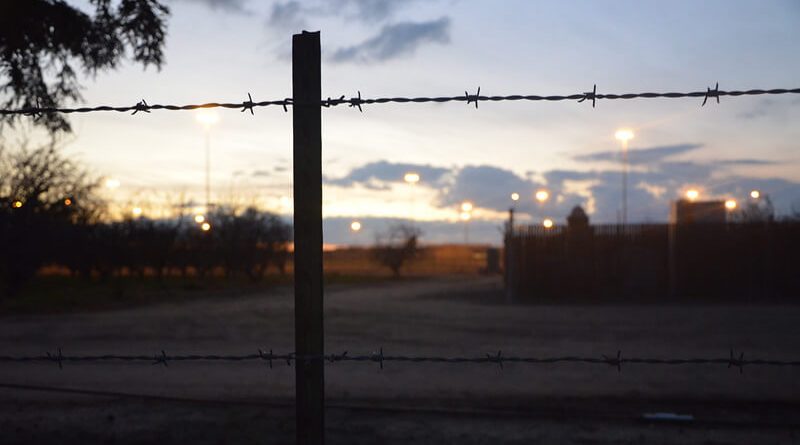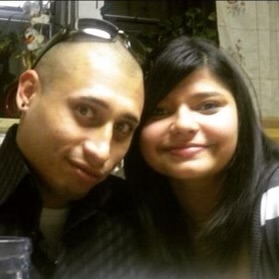We are pleased to announce the publication of a new Occasional Paper, “Forgotten Victims?: Women and COVID-19 Behind Bars,” by Amaia Elorza Arregi, Bridget Conley, Matthew Siegel, and Arlyss Herzig (World Peace Foundation, November 2020).
COVID-19 and the policies designed to counter it in American prisons pose distinct medical, emotional, psychological, and economic threats for incarcerated women and their families. Drawing on analysis of 138 women’s state and federal prisons across the United States, coupled with review of research on women’s prisons, and detailed profiles of the hardest hit facilities with insights from the women incarcerated inside them, this paper provides unique insight on the impacts of COVID-19 behind bars.
Interactive map of COVID-19 outbreaks in adult women’s detention facilities in the US, including co-ed facilities.

Map details COVID-19 outbreaks in adult women’s detention facilities in the US, including co-ed facilities. (Data: Matthew Siegel; Map: Arlyss Hezig).
Less than one year into the COVID-19 pandemic, many questions remain unanswered about the virus, but already glaringly apparent are some factors that increase risk. One is the vulnerability that exists for people who are incarcerated; infection rates in prisons are 5.5 times higher than among the general American public. The high rates in prisons are likely a result of both housing conditions and the statistically higher rates of co-morbidities among the incarcerated population.
Another factor is gender. There is early evidence that males have an increased risk of dying, lower recovery rates and increased severity of symptoms. Whether this outcome results from biological, behavioral or a mix of factors requires additional research. Incarcerated women, thus, by gender, are likely to be at lower risk of severe disease outcomes than incarcerated men. But given conditions in prison and high rates of co-morbidities, they remain at significant risk. Further, as has been studied in the general population, the gendered impacts of COVID-19 are not limited to clinical prognosis. For incarcerated women, impacts of lockdowns designed to counter the spread of the virus within prisons present distinct challenges that compound pre-existing issues faced by women behind bars: psychological, emotional, and economic stresses.
Key Take-Aways:
We conclude by presenting five of the demands most commonly articulated by organizations — many of which are led by formerly incarcerated women — working to help protect women from the pandemic behind bars.
Release people:
- Grant 180-days Good Time to allow everyone within six months of going home to get home (VOTE-Louisiana);
- Issue medical parole for everyone with respiratory conditions, anyone who is immunocompromised, and anyone over 60 years old (see recommendations for commutations in Addendum II, “I don’t want to die in prison” by the American Friends Service Committtee and Michigan Criminal Justice Program);
- Governors should use their clemency power to bring people home (see the campaign work of Families for Justice as Healing to learn more about this issue in Massachusetts).
Better equip people inside prisons to protect themselves physically, emotionally and mentally:
- Provide masks and gloves to all staff and incarcerated people;
- Refrain from use of solitary or lockdown to achieve medical isolation;
- Reduce the costs of calls and video so that incarcerated people can maintain their connections with loved ones.
Create stronger oversight mechanisms to review how prisons uphold the human rights of the women they incarcerate:
- Create a jail and prison COVID-19 oversight commission under the Office of Public Health and CDC, with the power to interview sick people, enforce basic medical standards, and ensure families have a right to know about the health of their loved ones (see the work of VOTE-Louisiana).
Do not allow the crisis moment to distract attention from longer-term goals:
- Support efforts to change prison and the broader criminal justice system, as is being done by VOTE Louisiana, Massachusetts Criminal Justice Coalition, The Future Justice Fund, the Florida Campaign for Criminal Justice Reform, the Michigan Collaborative to End Mass incarceration, Families for Justice as Healing, the California Coalition for Women Prisoners, among many others.
Support efforts that help incarcerated people advocate for themselves:
- Support organizations led by formerly incarcerated women, an umbrella group for these organizations is the National Council for Incarcerated and Formerly Incarcerated Women;
- Expand educational opportunities for women inside prisons (see the work of Jamii Sisterhood);
- Enable incarcerated people to access their voting rights (see the work of The Sentencing Project);
- Empower people directly impacted by incarceration in decision-making about the justice system (as an example, see the legislative recommendations put forward by Daughters Beyond Incarceration and the Louisiana Women’s Incarceration Task Force).
Find the full paper here: Forgotten Victims?: Women and COVID-19 Behind Bars.
Photo: Rally at Chowchilla Valley State Prison for Women, Daniel Arauz, January 2013Flickr (CC BY-SA 2.0)



